Today we woke up bright and early before sunrise to go birdwatching in the mesophyllus forest. We began our day with spotting a pair of mountain Trogons (Trogon mexicanus), white throated thrush (Turdus assimilis), a white eared hummingbird (Hylocharis leucotis), a sparkling-tailed hummingbird (Tilmatura dupontii), and an Audubon’s Oriole (Icterus graduacuada) within the brush. We then returned to eat a delicious hardy breakfast of cheesy enchiladas (with great vegan options). After breakfast, we had a quick debriefing on yesterday’s bird classification comparing field observations to the field guides provided. We then geared up and headed back onto the trails of the mesophyll forest to begin daily activities. We first stopped at a picturesque stream to search for amphibians and invertebrates within the leaf litter around the stream; we found a leaf litter frog, several flatworms (platyhelminthes), and a centipede. As we continued along the trail, we noticed several trees with conspicuous lineations of holes within the bark of the trees. Javier explained to us that these holes are a result of yellow-belly sapsuckers, which are a type woodpecker who places many holes around the tree to create a sap-trap for attracting and capturing insects! We stopped at several more streams to continue searching for creatures, and further along on the trail our instructors organized a habitat structure activity. This consisted of learning how to use simple but powerful field equipment such as clinometers for measuring hill slope, densitometer for measuring canopy cover, and a soil moisture meter as just a few examples. We practised using these tools in preparation for our individual group projects which we are underway in designing. Along this hike we continued our thermal ecology activity, measuring the temperatures above and below coverboards, as well as the ambient air temperature as we went. We ended our hike back at the biology station when Javier found the first snake of the trip – a Mexican brown snake (*Storeira sp.)! After a quick break to get reorganized for our next activities, groups split off to begin working out details pertaining to individual projects, using our newly discovered tools to aid in this practice. After a delicious sushi lunch, everyone had the opportunity to work on their seminar presentations, or take a well deserved break period. This also allowed us to gather our thoughts regarding our projects to present to the rest of the group for feedback. Overlooking the remarkable landscape, we sat down and helped one another refine our hypotheses for our major projects. Data collection and statistical analyses were rationalized among faculty and students . Each group made an official name to represent themselves, such as the “Boom-chalacacas”, and the “BRO-meliads”. We then listened to three seminars presented by Chenxi, Darcy, and Gerardo regarding the biodiversity and species of Mexico. Finally to end the day, we had a DIY sandwich dinner in the cafeteria in the glow of our headlamps, taking the time to make sure we cleaned up after ourselves to show our appreciation to the amazing kitchen staff here at Las Joyas. Can’t wait for another exciting day, and begin data collection for our projects! Adios!
En español
Buenos días del quipo 3 en el día 3.
Hoy despertamos con entusiasmo antes del amanecer para ir a observer aves en el bosque mesófilo. Iniciamos el día observando un par de Trogones (Trogon mexicanus), Zorzal de garganta blanca (Turdus assimilis), un colibrí de oreja balca (Hylocharis leucotis) y el Tilmatura dupontiiy tambien un bolsero de Audubon (Icterus graduacauda) entre los matorrales. Regresamos a la estación a desayunar un plato fuerte de enchiladas suizas (con opción vegana). Después continuamos con la identificación de aves del ejercicio del día anterior comparando nuestras observaciones con las ilustraciones de las guias de campo. Ya que terminamos, nos preparamos para irnos de nueva cuenta de excursion al bosque mesófilo a continuar nuestras actividades.
Primero paramos en un arroyo para burcar anfibios; encontramos ranitas, varios gusanos planos (platelmintos) y un cienpies. Continuamos después nuestra caminta por el sendero y notamos que algunos árboles tenian unas líneas con cavidades pequeñas sobre la corteza. Javier explicó que se trataba de agujeros hechos por un carpintero conocido como chupasabias (Spyrapicus varius) que hace los agujeros para que la sabia de los árboles fluya y atraé a los insectos que a su vez son comidos por el carpintero. Continuamos más Adelante para seguir buscando animals y para realizar una actividad de descripción de estructura de habitat. La práctica consistió en aprender a usar herramientas como clinómetros, densiometros para medir cobertura de follaje y medidores de humedad de suelo. Practicamos para prepararnos en los proyectos de equipo que estamos diseñando. A lo largo de la caminata, continuamos con las medidas del experiment de ecología térmica, tomando temperature fuera y dentro de las plataformas de madera sobre el suelo y la ambiental.
Terminando nuestra caminata, Javier encontró la primera serpiente, una Storeira sterorides. Después de un Descanso, nos organizamos en equipos para continuar nuestros proyectos, usando las herramientas que aprendimos a usar. Después de una sabrosa comida a base de sushi nos dieron tiempo para prepararnos en la presentación de seminaries o solo descansar. Tamien tuvimos tiempo de discutir ideas de proyectos para presentarlas al resto de la clase y tener retroalimentación. Disfrutando el asombroso paisaje, nos sentamos a refinar nuestras hipótesis para los proyectos. La toma de datos y el análisis estadístico fue discutido entre instructors y estudiantes. Cada equipo se present con sus nobres oficiales de equipo, como el equipo “Boom Chachalacas” o las BRO-meliads.
Para finalizer el día, escuchamos tres seminarios presentados por Chenxi, Darcy y Gerardo sobre la biodiversidad y especies de México. Finalmente, cenamso sabrosos sandwiches preparados en el comedor por nosotros a la luz de nuestras lamparas personales, tomando tiempo para asegurarnos de dejar todo limpio y mostrar nuestro agradecimiento por el fabulosos personal de cocina de Las Joyas. No Podemos esperar por otro emocionante día y de colecta de datos de nuestros proyectos. Adios !
- Sean fungal photobomb
- leaf litter frog.
- Javier contemplating life
- Spiny lizard giving some attitude.
- Liam saddened by capture of leaf litter frog
- Daily Emily
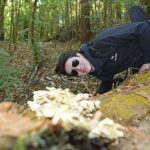
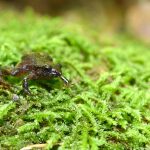
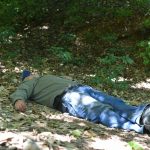
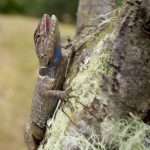
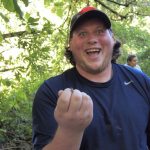
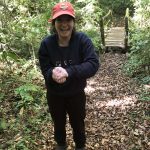
Leave a Reply